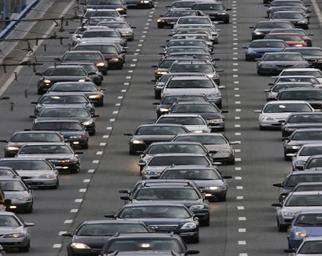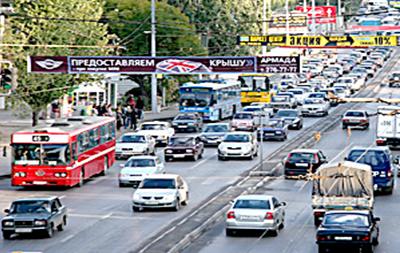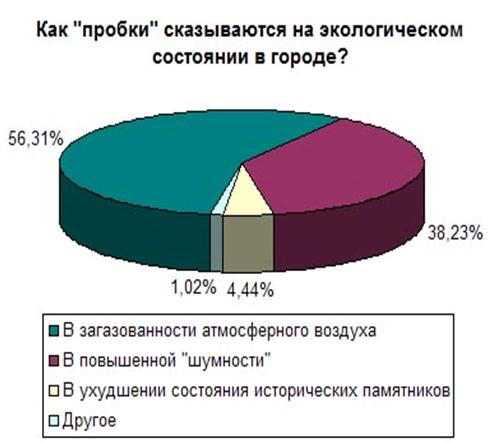TEXT7. THE ENVIRONMENTAL COST OF CARS
Motor vehicles have brought enormous social and economic benefits. They have enabled flexibility in where people live and work, the rapid and timely distribution of goods and ready access to a variety of services and leisure options. Many people are very attached to their cars. They say that having a car is an essential part of their lives – it offers mobility, power, freedom and convenience. The typical car owner spends 1,600 hours (over 50 days) each year on his car driving, parking and cleaning it.

The car industry is the largest industry in the world economy. It is dominated by huge American, Japanese and European companies like General Motors, Toyota and Volkswagen. General Motors is the largest transnational corporation. Since 1970 the global fleet of vehicles has been growing at the rate of about 16 million cars per year. This expansion has been accompanied by a similar growth in fuel consumption. If this kind of growth continues by the year 2025 there will be over 1 billion vehicles on the world’s roads.
In most parts of the world the motor car is seen as a sign of progress and development. In the wealthy nations of North America, Europe and Japan per capita car ownership is very high while in most developing nations it is still very low. There are about 750 vehicles per 1000 persons in the United States, more than 500 in Japan and only 8 vehicles per 1000 person in China. But the car industry in China is developing rapidly though traditionally up to 90 % of all travel in Chinese cities is made by bicycle. China plans to invest 10 billion dollars in the car industry and wants to produce one million cars a year.
The widespread use of cars has real environmental and economic costs. Vehicles are major sources of urban air pollution and greenhouse gases emissions. They make our towns and cities dirtier, noisier and more dangerous places to live. Vehicles also represent an important threat to the economic security of many nations because of the need to import oil to fuel them.
The motor car industry requires a vast quantity of raw materials. It uses 20% of all world steel, 10% of aluminium, 7% of copper, 50% of lead and 60% of natural rubber. Besides this the transport sector consumes about one half of the world’s oil production, the bulk of it as motor fuel. Car engines use only 10 to 20% of energy in the fuel – the rest is lost as noise, heat and pollution.

Road traffic is the source of one third of all harmful air pollution in the world. Car exhausts contain nitrogen oxide which contributes to acid rain, carbon dioxide which contributes to global warming, and lead which damages human brain and kidney.
Worldwide vehicles currently emit well over 900 million metric tons of carbon dioxide each year. These emissions account for more than 15 per cent of global releases of this greenhouse gas. Because of their large vehicle fleets developed countries are responsible for a large share of emissions. These countries represent only 16% of the world’s population but they accounted for two thirds of total world carbon dioxide emissions from cars.

Besides greenhouse gases car exhausts contain lead which is added to gasoline to improve the engine performance. Lead is particularly toxic to the brain, kidney, reproductive system and cardiovascular system. It is very dangerous because it can accumulate in the body. Lead is a special hazard for young children. Lead exposures can significantly reduce the IQ of school-aged children; they also cause aggressive behavior, delinquency and attention disorders.
Many countries introduced catalytic converters into their cars which require unleaded gasoline. But despite widely recognized damage to the health most countries still use leaded fuel. By 1996 only 14 countries had completely phased out the use of leaded gasoline.
Gasoline and diesel fuel are distilled at huge refineries which produce both toxic waste and toxic air emissions. The refineries are located in towns which have the highest cancer rates and are populated by workers with the highest occupational disease rates.

Road building withdraws large areas of land from agricultural use, requires tremendous amounts of resources and causes great changes in the environment. Motorways and the associated interchanges, exits and entry ramps cover thousands of acres of prime food-producing land in Europe. In the USA 60 thousand square miles (10 per cent of the country’s arable land) have been paved. That is the area the size of Europe. In places where roads are built the topsoil is pushed aside, the vegetation is stripped away and animal habitats are destroyed.
Asphalt is made from toxic tar that remains from coal and oil processing. To that is added aggregate which often comes from incinerators and power plants and is laden with dangerous heavy metals like cadmium and mercury. These materials slowly leach their contents into the soil and water.
In cities close to one third of all land goes to accommodate the car – parking lots, expressways, roundabouts, bridges, petrol stations and garages. Parking lots devour huge stretches of land and are empty 80 per cent of the time. Between parking spaces at home, at work and at the shopping centers the average car uses three times the space of the average home. Parking lots for shopping centers are the most environmentally destructive. Car berths are marked by thick puddles of oil and transmission fluid and the water run-off from these places violates environmental standards set for industrial discharges.
From the 1960s onwards more and more people protested against the motor car. Some pressure groups and local councils opposed traffic in towns, the building of new roads, the closure of railways and the loss of bus services. Some councils restricted the use of cars, improved public transport and created better facilities for pedestrians and cyclists.
Now car manufacturers are trying to make more environmentally friendly cars which use fuel more efficiently and cause less pollution. From 1992 all new cars in Europe had to be fitted with catalytic converters.
In the future cars may run on solar power, alcohol from plants or fuel cells using methanol or hydrogen. They will be much lighter with aerodynamic design and advanced electronics.
What can you do to reduce the cost of the car to people and their environment?- Walk, cycle or take public transport wherever possible. Shop locally when you can.
- Maintain and drive your car carefully so that it uses energy efficiently, does not cause unnecessary pollution and lasts as long as possible.
- Buy a small, fuel-efficient car with a catalytic converter.
Ex.1. Give Russian equivalents for the following:
Аrable land; cancer rate; catalytic converter; fuel consumption; incinerator; industrial discharges; leach; lead exposure; per capita; power plant; raw materials; refinery; run-off; waste.
Ex.2. Agree or disagree. Try to prove your opinion.
- Motor cars did not bring any social or economic benefits.
- The car industry is the largest in the world economy.
- Global car fleet growth was accompanied by a decrease of fuel consumption.
- The widespread use of cars does not produce any environmental problems.
- The motor car industry requires a vast quantity of raw materials.
- Car engines use 80% of energy in fuel.
- Car exhausts do not contain any harmful substances.
- Developed countries are responsible for the largest share of carbon dioxide emissions.
- There is no use to run your car on unleaded gasoline, because lead is absolutely harmless.
- Towns with oil refineries have the highest cancer rates.
- Roads use up large areas of arable land.
- People have been encouraged to use cars by the changed design of cities.
- People do not protest against the expanded use of cars.
Ex.3. Working in pairs, discuss the advantages and disadvantages of cars. One person speaks for cars and another against them.